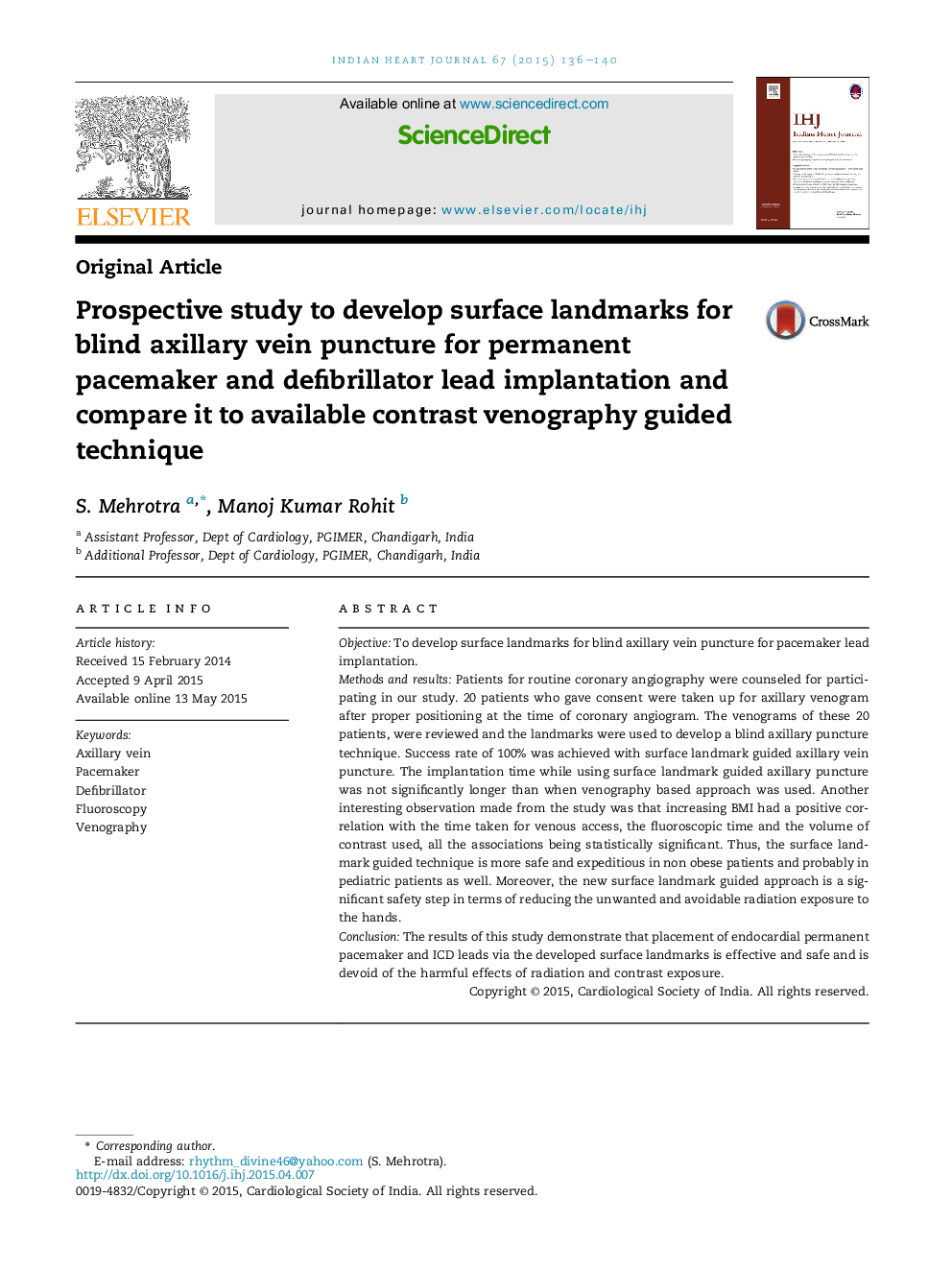| Article ID | Journal | Published Year | Pages | File Type |
|---|---|---|---|---|
| 2927858 | Indian Heart Journal | 2015 | 5 Pages |
ObjectiveTo develop surface landmarks for blind axillary vein puncture for pacemaker lead implantation.Methods and resultsPatients for routine coronary angiography were counseled for participating in our study. 20 patients who gave consent were taken up for axillary venogram after proper positioning at the time of coronary angiogram. The venograms of these 20 patients, were reviewed and the landmarks were used to develop a blind axillary puncture technique. Success rate of 100% was achieved with surface landmark guided axillary vein puncture. The implantation time while using surface landmark guided axillary puncture was not significantly longer than when venography based approach was used. Another interesting observation made from the study was that increasing BMI had a positive correlation with the time taken for venous access, the fluoroscopic time and the volume of contrast used, all the associations being statistically significant. Thus, the surface landmark guided technique is more safe and expeditious in non obese patients and probably in pediatric patients as well. Moreover, the new surface landmark guided approach is a significant safety step in terms of reducing the unwanted and avoidable radiation exposure to the hands.ConclusionThe results of this study demonstrate that placement of endocardial permanent pacemaker and ICD leads via the developed surface landmarks is effective and safe and is devoid of the harmful effects of radiation and contrast exposure.
